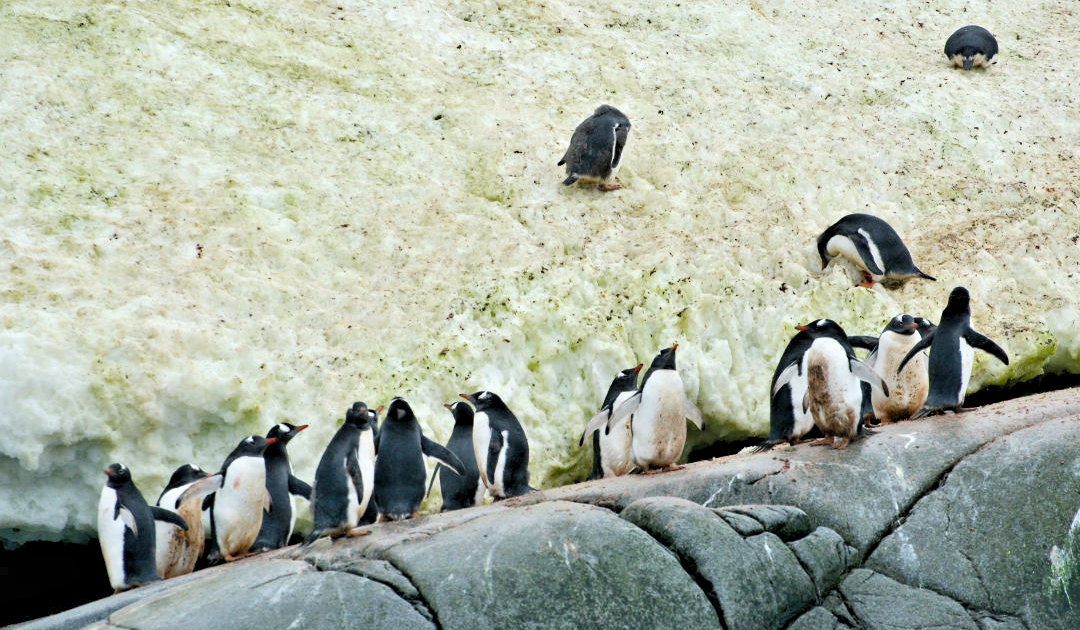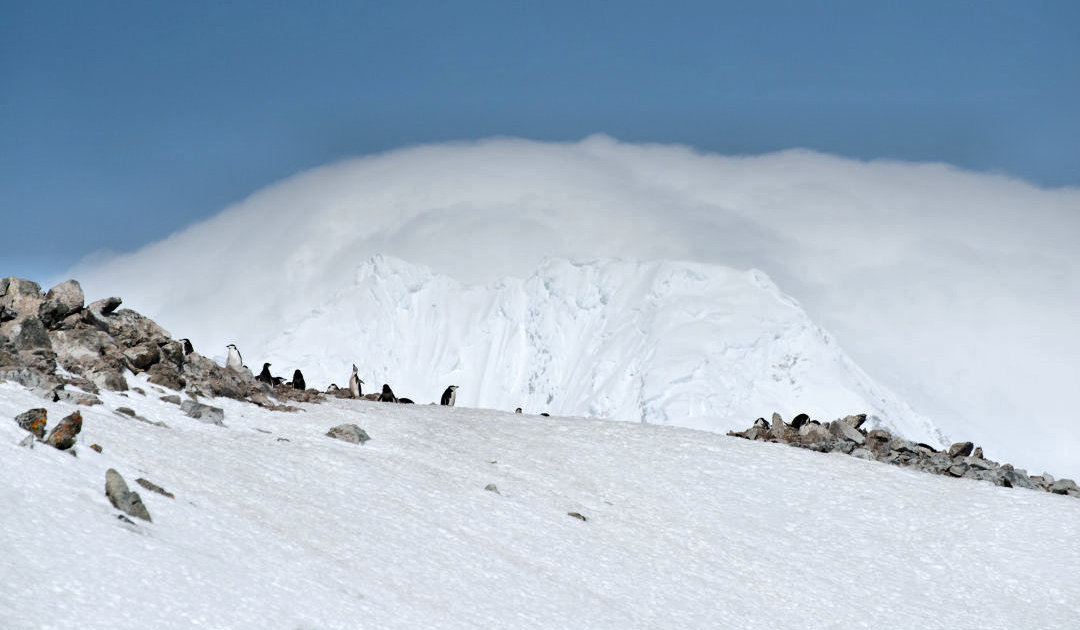
Snow should be white and as a child you are always warned not to eat colored snow, especially the yellow one. But if you look a little more closely in Antarctica (or in other polar regions), you will also discover green or red snow patches. These colors come from microscopic algae, so-called snow algae. An international research team has now produced a map of the amount of snow algae on the Antarctic Peninsula and has shown that these tiny organisms have great ecological significance.
The team led by Dr Matt Davey from the University of Cambridge (UK) found out by using satellite imagery and field work that the algal blooms (when the algae become photosynthetically active on the surface) cover an area of almost 2 square kilometers along the Antarctic Peninsula. “We discovered a total of 1,679 individual algal blooms of green algae on the snow surface, which together covered an area of 1.9 square kilometers, making up a carbon sink of 479 tons per year,” explains Dr. Matt Davey. The researchers also found that nearly two-thirds of the blooms took place on small, low-lying islands without major elevations. But looking at the mass of the algae, it became apparent that most of them were located on a few large areas in the north of the Antarctic Peninsula and on the offshore South Shetland Islands. There, the algae can also spread to higher altitudes when the snow melts and the algae drift.

Another finding that was gained from the results was the fact that the distribution of green algae is influenced by seabirds and mammals. Their excrements provide the algae with the nutrients necessary for growth and reproduction. Especially penguins with their nitrogen-containing food (mostly krill) and the preference to breed in only slightly snowy places, help the algae to spread. In addition to nitrogen, algae also require iron and other minerals and trace elements that lie underground. These are released when the penguins occupy the breeding grounds, the snow melts faster and reveals the rocky ground. The scientists also found extensive algal blooms near breeding grounds of other bird species.

The Antarctic Peninsula is the most vegetated area of the Antarctic continent, of which only about 0.18 percent is ice-free, thanks to its location and climatic conditions. But here, too, just 1.34 percent of the area is vegetated. Snow algae areas are therefore an important factor when it comes to CO2sinks on the terrestrial area of Antarctica. “This (the study) is a significant leap in our understanding of land-dependent living in Antarctica and how it will change as global warming progresses,” says Dr Davey. Global warming, which is greatest on the Peninsula side, will negatively affect the algae areas on the low-lying islands, the researchers write in their paper. Because the already low snow cover could disappear in whole or in part and with it the algae as well.

But the forecasts are not so bleak. “In the course of the warming of Antarctica, we predict an increase in the mass of snow algae. This is because spreading to higher areas will significantly outweigh the loss of small areas on the islands,” says co-author Dr Andrew Grant of the University of Cambridge. The amount of CO2 binding could also be even higher than currently estimated. The team focused on green algae. Red and orange algae are also CO2 fixers. The researchers therefore want to expand their data collection and field work across the continents and expand the color palette.
Source: Universität Cambridge / Gray et al (2020) Nature Comm 11 (2527)
Link to the original article: Gray et al (2020) Nature Comm 11(2527) Remote sensing reveals Antarctic green algae as important carbon sink
More on the subject:





